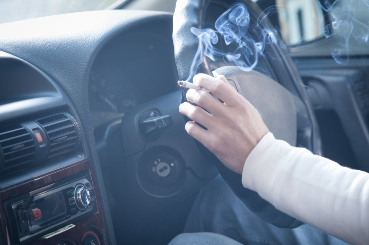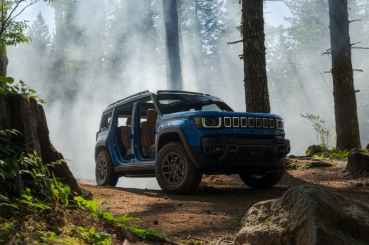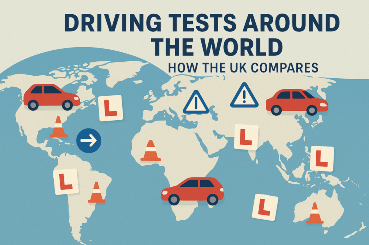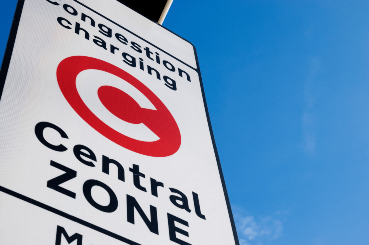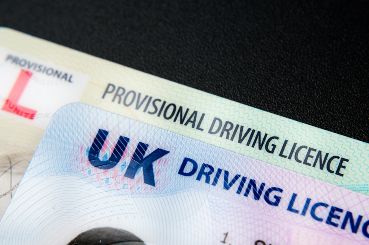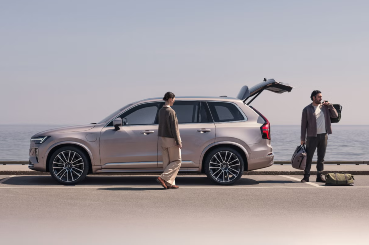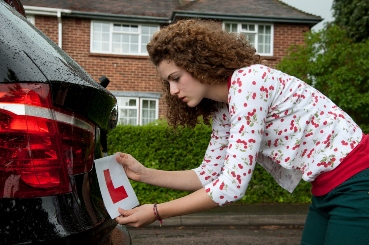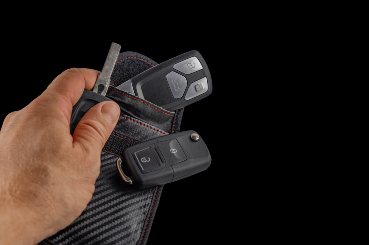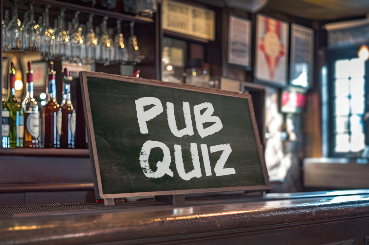Ever felt like a car just materialised next to you while driving? That’s likely because of blind spots – areas around your vehicle hidden from view by mirrors and windows.
Being aware of these zones and checking them regularly is crucial for safe driving.
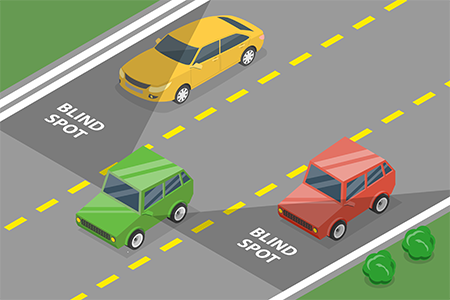
What Is a Blind Spot When Driving?
Blind spots are simply areas around your car that you can’t see directly. While mirrors and windows offer a good overall view, there are sections they can’t cover.
Imagine sitting in your car. Your eyes can only see so far forward, to the sides, and behind. Anything outside this range is a potential blind spot.
These hidden zones can easily conceal motorbikes, bicycles, pedestrians, or even other cars, posing a serious safety risk.
How Many Blind Spots in a Car?
Most cars have two main blind spots, one on each side towards the rear. These zones are located where the side of your car meets the rear window and extends back diagonally.
Think of them like two wedge-shaped areas that disappear from your view right around the edge of your rear window. However, there are other potential blind spots to be aware of too.
Where are Common Blind Spots?
Rear Quarter Panels:
These are the most common blind spots, positioned roughly behind your car’s C-pillars (the pillar between the rear passenger window and the back window).
The size of these blind spots can vary depending on the design of your car. Large SUVs may have bigger blind spots than smaller hatchbacks, but the basic principle remains the same – there’s a hidden zone right where the side of your car meets the rear window.
A-Pillars:
The thick pillars supporting your windscreen can block the view of pedestrians, cyclists or motorbikes, particularly at junctions when turning.
Imagine you’re stopped at a traffic light, waiting to turn right. The A-pillar on the right side of your windscreen can easily block an oncoming cyclist from your view as you begin your turn.
Large Vehicles:
Trucks and vans have even larger blind spots due to their size and higher seating position.
The areas obscured from the driver’s view can be much larger than in a standard car. Be extra cautious when driving near large vehicles, allowing them plenty of space and anticipating potential lane changes.

How Do You Check Your Blind Spots While Driving?
Shoulder Check:
This is the most crucial step. It involves a quick but deliberate glance over your shoulder in the direction you want to change lanes. Don’t just glance – turn your head fully to take in the entire picture. This ensures there are no vehicles lurking in your blind spot before committing to a lane change.
Mirrors:
While shoulder checks are essential, mirrors also play a vital role. Adjust your side mirrors so you can see just a sliver of your car’s body along with the approaching traffic. This way, a quick glance at the mirrors should confirm a safe lane change after you’ve completed your shoulder check. Remember, mirrors have limitations – they typically offer a narrower field of view than a shoulder check. So, never rely solely on mirrors to confirm a safe lane change.
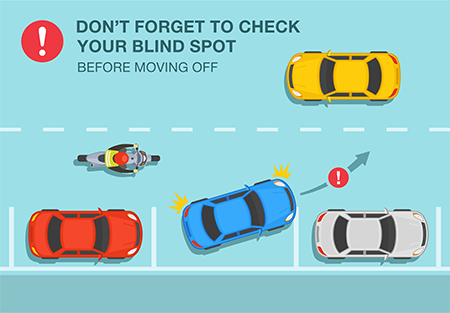
What Is An A-Pillar Blind Spot?
The A-pillar blind spot is a smaller zone created by the windscreen pillar on either side of the driver’s seat. While not as large as the rear blind spots, it’s important to be extra vigilant of this area, especially in busy traffic conditions.
Imagine you’re approaching a roundabout. An A-pillar blind spot could easily obscure a motorcyclist from your view as you navigate the roundabout, potentially leading to a dangerous situation.
Blind Spots and the Highway Code
Rule 12 of the Highway Code states you must be in a position to see to your front and side before moving off, changing lanes or overtaking. Checking your blind spots is a key part of fulfilling this legal requirement.
By being aware of these hidden zones and taking steps to check them regularly, you’re demonstrating responsible driving behaviour and complying with the rules of the road.
Think Bikes
Motorcyclists are particularly vulnerable due to their smaller size and lack of protection compared to cars. The “Think Bikes” campaign reminds drivers to be extra vigilant for motorbikes, especially when checking blind spots.
Motorbikes can easily disappear into blind spots, so a thorough shoulder check and mirror check are essential before making any lane changes or turns when sharing the road with motorbikes.
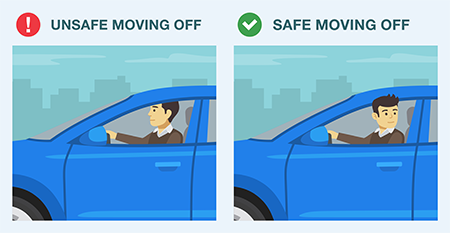
Consequences Of Not Checking Your Blind Spots When Driving?
Not checking blind spots can lead to serious accidents. A sudden lane change could result in a collision with a vehicle in your blind spot, causing injuries or even fatalities.
Being aware of these zones and checking them regularly is vital for preventing accidents and keeping yourself and others safe on the road. Imagine a scenario where you’re cruising down the motorway in the outside lane.
You glance in your mirror and see a gap in traffic ahead, so you decide to change lanes to overtake a slower car. However, you neglect to perform a shoulder check.
Tragically, a motorbike is travelling in your blind spot, and as you swerve into the lane, you collide with the motorbike. This situation highlights the devastating consequences of ignoring blind spots.
Tips About Blind Spots For Learner Drivers
Practice Shoulder Checks:
Get used to checking your blind spots as a habit, even during practice sessions with your instructor. This will help to embed the habit of checking blind spots before it becomes second nature.
Think about when your instructor reminds you to check your blind spot before every lane change or turn. This constant reinforcement will help you develop the necessary muscle memory and awareness.
Mirror Adjustments:
Ensure your mirrors are properly adjusted to minimise blind spots. Your instructor can guide you on the optimal positioning of your mirrors.
Ideally, you should only see a sliver of your car’s body along with the approaching traffic in your mirrors. This way, a quick glance at the mirrors can confirm a safe lane change after your shoulder check.
Ask Your Instructor:
Don’t be afraid to ask your instructor any questions you have about blind spots. They are there to help you become a safe and confident driver.
If you’re unsure about the size or location of your car’s blind spots, your instructor can demonstrate and explain them clearly.
By understanding blind spots and incorporating these checks into your driving routine, you’ll be a safer driver and contribute to a safer road environment for everyone. Remember, a few seconds spent checking your blind spots could prevent a lifetime of regret.

